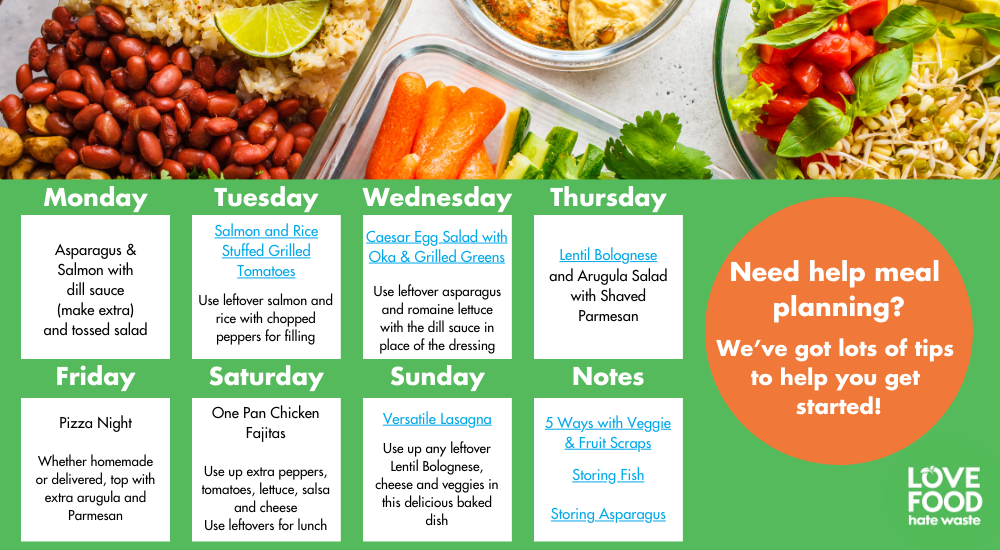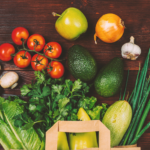Crafting a Spring Meal Plan
Embrace the season and refresh your meal routine with a new meal plan for spring. We know meal planning and making a shopping list are two easy ways to reduce food waste, so we’re happy to share a sample with you and show you how you can create your own. We used our Love Food Hate Waste Meal Planner, tips for meal planning and favourite recipes to create a sample plan for inspiration this spring.
Step 1: Take Stock
Begin by surveying your fridge, freezer, and pantry for ingredients you already have on hand and those that need to be used up. While you’re looking, shuffle things around a bit. Bring older items and duplicates to the forefront, apply “Eat Me First” labels as needed and take note of any open sauces, dressings, or condiments. Use the foods you already have as inspiration for meals in the upcoming week.
Step 2: Generate Meal Ideas
Taking stock naturally leads into generating meal ideas. Build on the momentum and brainstorm a few more dinner ideas. Think about recipes that use your existing ingredients and how you can combine them with spring produce like asparagus, lettuce, peas, radishes, pineapples, mangos, strawberries, rhubarb, mushrooms etc. Seasonal produce will liven up your existing meal routine and is often more affordable with a lower environmental footprint. If nothing comes to mind, do an online recipe search with the ingredients you have on hand and some of these springtime favourites.
Step 3: Schedule Your Meal Ideas
Once you have several ideas, plot your recipes in a weekly meal planner. Think about your upcoming schedule and when you need quickie meals and when you can experiment with something new. Also, think about how you can optimize your workflow and ingredients. For example, start with a big meal that creates leftovers for lunches or several subsequent meals. And consider which ingredients you can easily prep ahead.
For example, if you make Roasted Lemon Chicken with Rice and Spring Vegetables (asparagus, peas and baby carrots) you could have extras for one or two more unique meals. One night you could have creamy pasta with leftover chicken and another night you could have fried rice with vegetables and shredded chicken. If you prepped extra carrots for snacking on through the week, you could use the carrot tops for making pesto that you could potentially use in the pasta dish.
Step 4: Make Your Shopping List
Write a shopping list based on the meals you’ve planned and the quantities you’ll need. To account for what you already have, create a list split into what you have and what you need. The portion size guide can help with how much you’ll need per serving. If you follow the mantra from our Food Waste Action Week “Choose What You’ll Use” you’ll save money, prevent food waste and the stress of having too many extras.
Step 5: Put Your Plan into Action
You’re ready to shop, store and enjoy your meal plan. Even when the plan gets messed up by everyday life – and we know it will – you can easily pick up where you left off because you have better control over what’s in your fridge, freezer and pantry.
We’ve put these ideas into action to prepare a sample spring meal plan for you. It includes some of our favourite tips and recipes. Click here for our recipes, 5 Ways With Veggie and Fruit Scraps, and our full A-Z Storage Guide. Enjoy!

We love hearing about your meal plans and how you use up what’s in your fridge and pantry. Share your photos and ideas with us on Instagram at @lovefoodhatewasteca.


